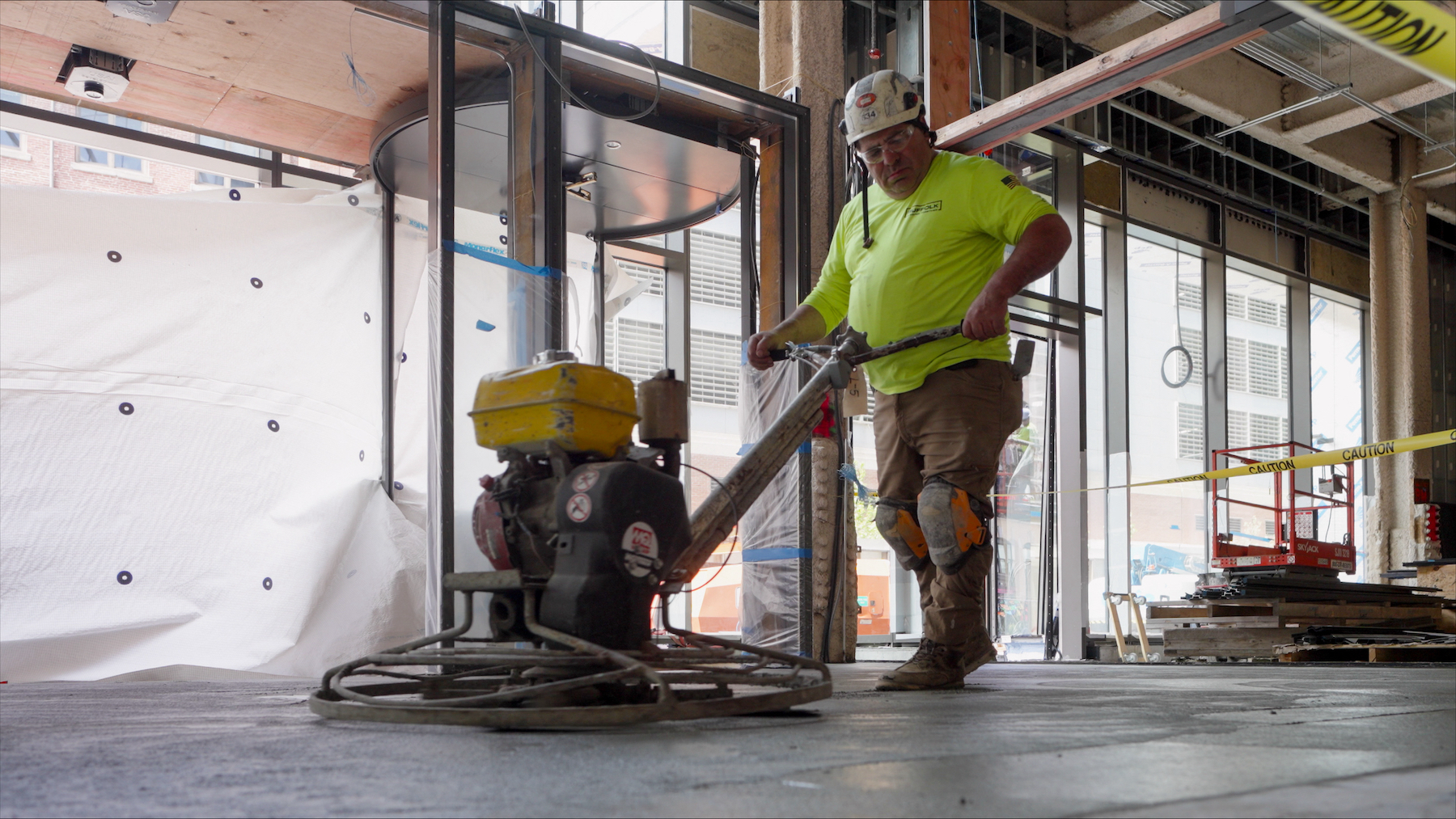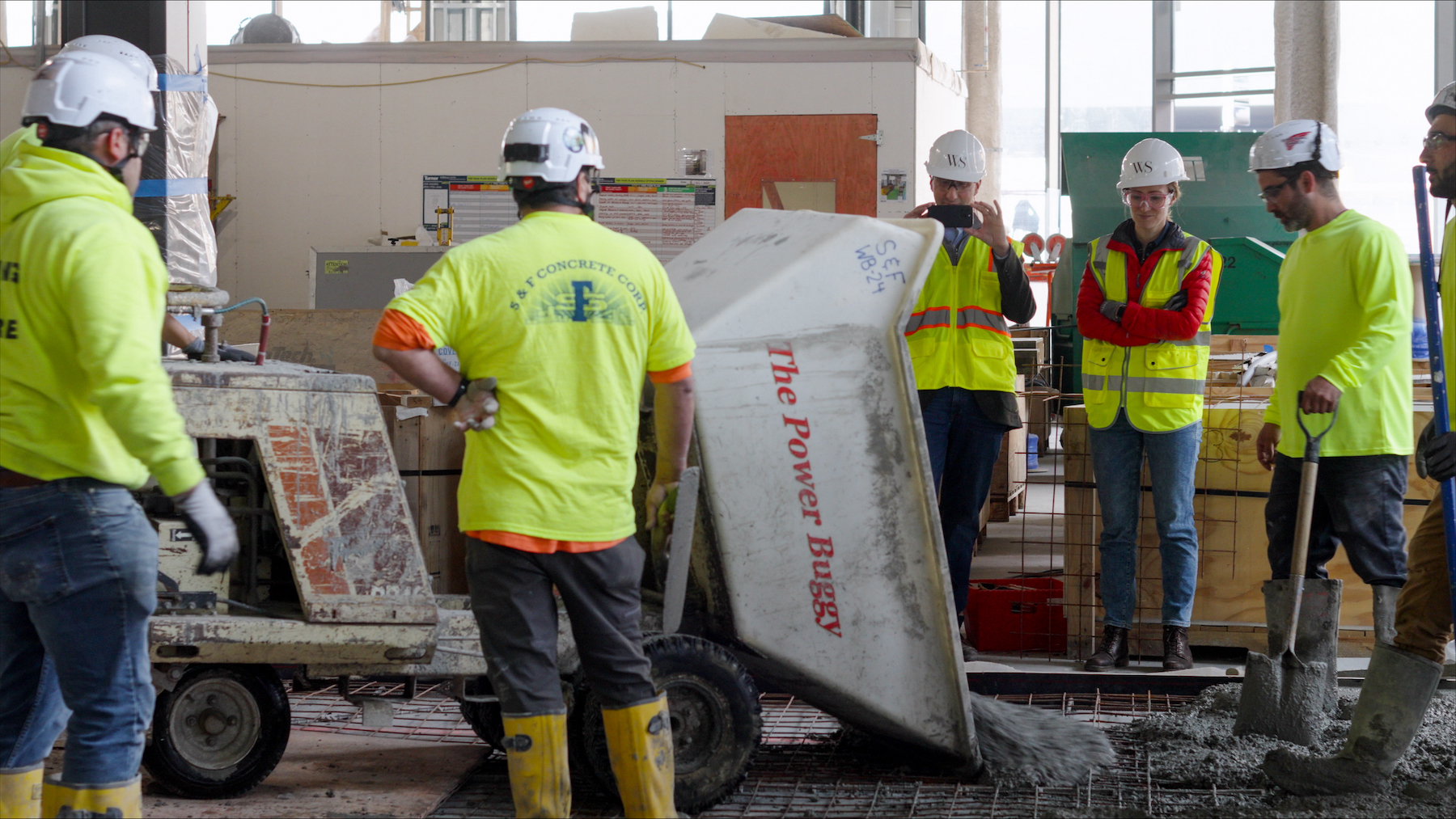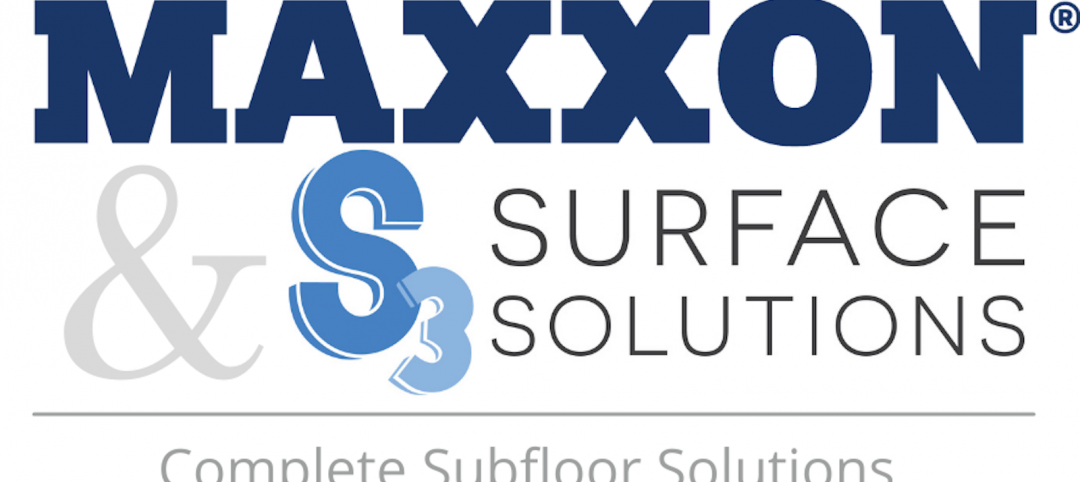Earlier this month, a 575-sf patch of concrete was poured as part of a public space known as the Paseo, inside One Boston Wharf Road, a 707,000-sf 17-story building in Boston’s Seaport district that is scheduled for completion later this year. Amazon will be the building’s sole tenant.
What makes this newsworthy, you ask? Well, for one thing, One Boston Wharf Road, developed by WS Development, will be Beantown’s largest Net Zero Carbon office building. Its goal is to reduce greenhouse gas emissions by more than 90 percent below code requirements and eliminate 5.1 million pounds of CO2 annually. (WS Development recently announced that it had purchased renewably generated electricity for all electric power used by its Seaport portfolio.)
Also see: AGC releases decarbonization playbook to help assess, track, reduce GHG emissions
The concrete installation represents the first commercial application of low-carbon cement manufactured by Sublime Systems, a business that the Massachusetts Institute of Technology spun out as an enterprise in 2010.
Production of cement currently accounts for 8 percent of global CO2 emissions, mostly caused by the intense temperatures required to make cement clinker from limestone, a common ingredient in concrete. Sublime Systems, which is based in Somerville, Mass., claims that its Sublime Cement, the product's marketing name, avoids traditional cement’s major emissions sources, limestone feedstock and fossil-fueled kilns, by applying electrochemistry to extract cementitious ingredients from non-carbonate materials, without degrading the properties that make concrete the most-used building material worldwide.
Sublime Systems’ technology makes ASTM C1157-compliant cement, a drop-in replacement for Portland Cement in concrete. The company, which was incorporated four years ago, has raised more than $140 million from tech investors, and cooperative agreements with several U.S. Department of Energy programs. The company’s pilot plant has a 250-ton annual production capacity, and Sublime Systems is developing a 30,000-ton capacity commercial facility that will open in Holyoke, Mass., in early 2026.
“We and Sublime share the same vision and mission,” said Yanni Tsipis, a Senior Vice President at WS Development and a lecturer at the MIT Center for Real Estate. “We have an opportunity to showcase the most forward—thinking low-carbon building technology on the planet in the public space, at the heart of the building. This partnership epitomizes the value of technology transfer from incubator to industry.”
Educating the public about lowering carbon

The floor of the Paseo, in which Sublime Cement is installed, will be marked with educational material explaining the significance of decarbonized cement in the battle against climate change. The Paseo will lead to a new 1.5-acre park called The Rocks at Harbor Way that will be the focal point of a one-third-mile promenade that connects to the water’s edge. (James Corner Field Operations came up with this concept for Harbor Way.) One Boston Wharf Road will feature 77,000 sf of retail space.
One Boston Wharf Road is adjacent to 11 Harbor Way, a 525,000-sf, 17-story office tower that WS Development completed in the spring of 2022.
Related Stories
Design Innovation Report | Apr 19, 2023
Reinforced concrete walls and fins stiffen and shade the National Bank of Kuwait skyscraper
When the National Bank of Kuwait first conceived its new headquarters more than a decade ago, it wanted to make a statement about passive design with a soaring tower that could withstand the extreme heat of Kuwait City, the country’s desert capital.
3D Printing | Apr 11, 2023
University of Michigan’s DART Laboratory unveils Shell Wall—a concrete wall that’s lightweight and freeform 3D printed
The University of Michigan’s DART Laboratory has unveiled a new product called Shell Wall—which the organization describes as the first lightweight, freeform 3D printed and structurally reinforced concrete wall. The innovative product leverages DART Laboratory’s research and development on the use of 3D-printing technology to build structures that require less concrete.
Concrete | Mar 17, 2023
American Concrete Institute releases new guide for shotcrete construction
The American Concrete Institute, through the work of ACI Committee 506, has released ACI PRC-506-22: Shotcrete—Guide. The newly introduced guide provides information on materials and properties of both dry-mix and wet-mix shotcrete and covers most facets of the shotcrete process including application procedures, equipment requirements, and responsibilities of the shotcrete crew.
Student Housing | Mar 13, 2023
University of Oklahoma, Missouri S&T add storm-safe spaces in student housing buildings for tornado protection
More universities are incorporating reinforced rooms in student housing designs to provide an extra layer of protection for students. Storm shelters have been included in recent KWK Architects-designed university projects in the Great Plains where there is a high incidence of tornadoes. Projects include Headington and Dunham Residential Colleges at the University of Oklahoma and the University Commons residential complex at Missouri S&T.
Concrete | Jan 24, 2023
Researchers investigate ancient Roman concrete to make durable, lower carbon mortar
Researchers have turned to an ancient Roman concrete recipe to develop more durable concrete that lasts for centuries and can potentially reduce the carbon impact of the built environment.
75 Top Building Products | Nov 30, 2022
75 top building products for 2022
Each year, the Building Design+Construction editorial team evaluates the vast universe of new and updated products, materials, and systems for the U.S. building design and construction market. The best-of-the-best products make up our annual 75 Top Products report.
Concrete Technology | Apr 19, 2022
SGH’s Applied Science & Research Center achieves ISO 17025 accreditation for concrete testing procedures
Simpson Gumpertz & Heger’s (SGH) Applied Science & Research Center recently received ISO/IEC17025 accreditation from the American Association for Laboratory Accreditation (A2LA) for several concrete testing methods.
AEC Tech Innovation | Mar 9, 2022
Meet Emerge: WSP USA's new AEC tech incubator
Pooja Jain, WSP’s VP-Strategic Innovation, discusses the pilot programs her firm’s new incubator, Emerge, has initiated with four tech startup companies. Jain speaks with BD+C's John Caulfield about the four AEC tech firms to join Cohort 1 of the firm’s incubator.
Products and Materials | Feb 24, 2022
MAXXON® Corporation announces strategic affiliation with S3 Surface Solutions
Maxxon® Corporation, creator of Gyp-Crete® and a leader in the underlayment industry for 50 years, has aligned with S3 Surface Solutions, an innovative manufacturer of products that address problematic concrete slabs, to bring innovative, technology-driven subfloor preparation solutions to the flooring industry.
Sponsored | Reconstruction & Renovation | Jan 25, 2022
Concrete buildings: Effective solutions for restorations and major repairs
Architectural concrete as we know it today was invented in the 19th century. It reached new heights in the U.S. after World War II when mid-century modernism was in vogue, following in the footsteps of a European aesthetic that expressed structure and permanent surfaces through this exposed material. Concrete was treated as a monolithic miracle, waterproof and structurally and visually versatile.

















